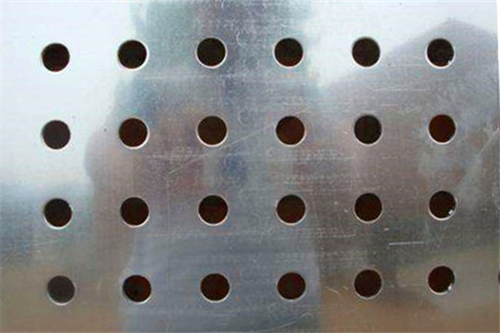How to Prevent Rust and Corrosion on Perforated Sheets – Complete Guide
Source:www.cn-psp.cnAuthor:河北森驰公司 Last updated:2025-06-14 15:47:35 Browse:
Perforated sheets are widely used in architecture, industry, decoration, and ventilation systems. Made from metals like iron, aluminum, or stainless steel, they are valued for their aesthetics, airflow capability, and structural integrity. However, due to their exposure to environmental factors, perforated sheets are vulnerable to rust and corrosion over time. To ensure long-term durability and maintain both functionality and appearance, applying proper perforated sheet rust prevention measures is essential.
In this article, we’ll explore practical, effective methods to protect perforated sheets of different materials, helping you maintain quality from storage to installation and beyond.
Among all metal types, stainless steel perforated sheets offer inherent resistance to corrosion. Thanks to alloy elements like chromium and nickel, they form a natural passive film on the surface that prevents oxidation, even in humid or chemical environments. If your budget allows, stainless steel is always the most reliable, rust-resistant option. However, for more cost-sensitive applications, iron and aluminum perforated sheets remain the mainstream choices and require targeted protective treatments.
2. Rust Prevention for Iron Perforated Sheets
Iron is particularly prone to oxidation when exposed to moisture, oxygen, and acidic environments. Without adequate protection, iron perforated sheets can develop rust spots, compromising both their strength and appearance. The following strategies are highly recommended:
1. Short-Term Storage Protection
For short-term storage, applying anti-rust oil on the surface of iron perforated sheets is a simple yet effective measure. This oil forms a temporary barrier, reducing exposure to air and moisture and slowing down the rusting process.
2. Surface Treatment Options
Painting: Applying anti-rust paint creates a protective coating that isolates the iron surface from moisture and air. Besides rust prevention, paint also enhances the sheet’s appearance. For outdoor use, premium-grade rust-resistant paints are highly recommended.
Electrostatic Powder Coating: This technique uses an electrostatic charge to bond powder particles to the metal surface. Once cured, the powder forms a durable, weather-resistant layer. Powder coating offers excellent protection against corrosion and allows for customized colors to meet design requirements.

3. Corrosion Prevention for Aluminum Perforated Sheets
Although aluminum doesn’t rust in the traditional sense, it can still corrode under certain conditions, such as high humidity, salt exposure, or acidic environments. Proper perforated sheet rust prevention for aluminum is still crucial:
1. Painting or Powder Coating
By applying protective coatings, either paint or powder-based, aluminum perforated sheets gain an added barrier against environmental damage. These coatings not only improve corrosion resistance but also offer a wide range of color options, perfect for aesthetic customization.
2. Anodizing
Anodizing is one of the most effective methods for protecting aluminum sheets. Through an electrochemical process, a dense oxide layer forms on the surface, significantly enhancing resistance to corrosion and wear. Anodized aluminum is ideal for long-term outdoor use in building facades, fences, and curtain walls.
4. Maintenance Tips and Summary
Beyond initial treatment, regular maintenance is key to preserving the longevity and appearance of perforated metal sheets. Consider the following best practices:
Clean the surface regularly, especially in humid or coastal areas, to prevent buildup of grime or contaminants that could accelerate corrosion.
Inspect painted or coated surfaces periodically. If any scratches, chips, or peeling are found, touch up immediately to prevent rust from spreading.
Avoid direct contact with strong acids, alkalis, or other corrosive substances during use or cleaning.
Conclusion
Preventing rust and corrosion on perforated sheets isn’t just about aesthetics—it’s also a matter of safety, durability, and value. By selecting the right materials, applying appropriate surface treatments, and conducting regular upkeep, you can dramatically enhance the performance and lifespan of your perforated sheets in any application.
If you need expert guidance on material selection or corrosion protection techniques, feel free to contact us. We’re here to help with tailored solutions for your project needs.
